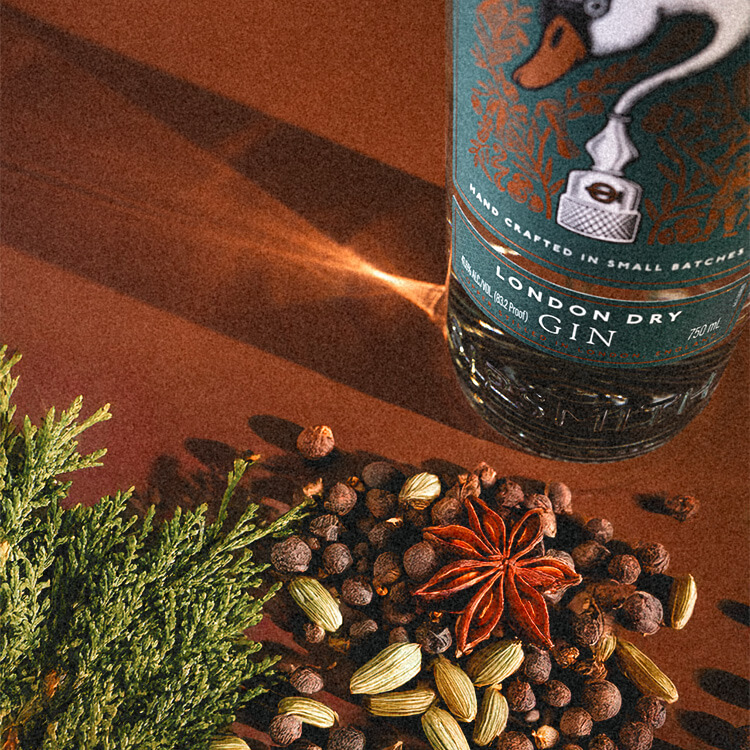Gin is a versatile spirit with a distinctive flavor. Its character largely comes from the careful selection of gin botanicals. These natural ingredients, which include herbs, spices, flowers, and fruits, are the very heart of gin production. Each botanical imparts unique flavors and aromas, creating a complex and enjoyable gin experience. This detailed exploration delves into the common and exotic botanicals, explaining how each contributes to the gin’s overall flavor profile.

The Essential Base: Juniper Berries
The defining characteristic of any gin is the presence of juniper berries. By law, juniper must be the dominant flavor in anything labeled as gin. Juniper berries provide a fresh, piney taste with hints of woodiness and sometimes a slight peppery note. The berries are responsible for that classic, clean flavor associated with traditional gins.
Common Botanicals in Gin
Beyond juniper, a variety of other botanicals are commonly used to craft gin. Each gin botanical is selected for its ability to create a complex, balanced flavor profile.
- Coriander Seeds. Often the second most prominent ingredient in gin, coriander seeds add a spicy, nutty flavor with a touch of citrus.
- Angelica Root. This botanical acts as a fixative. It helps bind the flavors of other botanicals together, contributing earthy and herbal notes.
- Citrus Peels. Orange, lemon, and lime peels are frequently used to add brightness and a zesty, fresh citrus aroma.
- Orris Root. From the iris flower, orris root offers a floral and slightly woody fragrance. It’s also used to stabilize the aroma of other botanicals.
Regional and Exotic Gin Botanicals
The choice of botanicals can vary widely depending on the gin’s style and the distiller’s vision. Many modern gins incorporate regional and exotic botanicals to distinguish their flavor profile.
- Lavender. Known for its relaxing scent, lavender adds a sweet, floral aroma that is instantly recognizable.
- Cardamom. This spice brings a complex, aromatic sweetness with hints of spice, citrus, and mint.
- Cassia Bark. Similar to cinnamon, cassia bark adds warmth and a sweet, woodsy aroma.
- Licorice. Adds sweetness and depth, with earthy, slightly bitter notes.
Infusion Methods
The methods by which botanicals are infused into the gin also play a crucial role in flavor development. There are several common methods used:
- Maceration. Botanicals are soaked in the spirit for a period before distillation, allowing intense flavors to infuse directly into the liquid.
- Vapor Infusion. Botanicals are placed in a basket through which heated vapors pass. This method typically results in a more delicate, complex gin as the flavors are imparted through the vapor rather than direct contact.
- Compounding. Sometimes called “bathtub gin,” this method involves adding flavors to a base spirit. This is done without redistillation, resulting in a more robust and less refined flavor profile.
The Art of Blending
The art of blending the right gin botanicals in the correct proportions is what makes gin distillation particularly unique. Master distillers spend years perfecting their recipes, experimenting with different combinations and quantities to achieve a balanced and harmonious flavor profile.
Tasting and Appreciating Gin
When tasting gin, consider the initial aroma—this is where the lighter, more volatile botanicals make their presence known. As you sip, the deeper flavors start to emerge, offering a complex journey through spicy, floral, herbal, and citrus notes. The finish will give you a sense of how the flavors linger and evolve, providing insight into the quality and balance of the botanicals used.
Conclusion
Exploring the world of gin botanicals reveals a rich tapestry of flavors that are as varied as they are fascinating. Each botanical plays a pivotal role in crafting the gin’s final taste, from the essential juniper to the more exotic spices and herbs. Understanding these ingredients not only enhances the enjoyment of drinking gin but also deepens appreciation for the meticulous craft involved in its production. Gin lovers and distillers alike celebrate botanicals as the secret ingredients that unlock a world of flavor possibilities, making each gin a unique and flavorful experience.
Frequently Asked Questions About Gin Botanicals
Botanicals are the heart of gin production, each imparting unique flavors and aromas that make every gin a complex and enjoyable experience. They define the gin’s character and overall flavor profile.
All gin must contain juniper berries as the dominant flavor. Other common botanicals include coriander seeds, angelica root, citrus peels (orange, lemon, lime), and orris root. Many modern gins also use exotic botanicals like lavender, cardamom, cassia bark, and licorice.
Gin botanicals are the natural ingredients—ranging from herbs and spices to flowers and fruits—that are used during gin distillation to create its distinctive flavors and aromas. They are the essential flavor-contributing components of gin.


